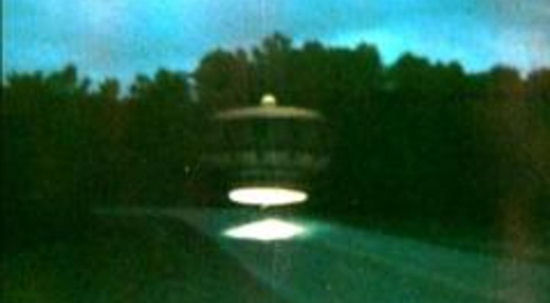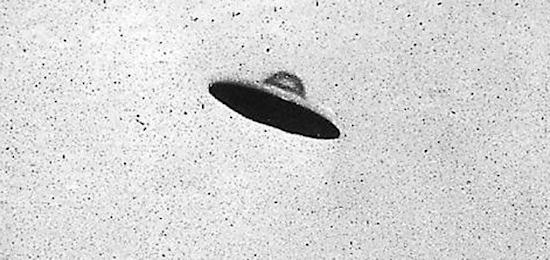UFOlogy believes strongly that UFO reports represent observations of phenomena involving intelligently controlled air vehicles of some kind with the most likely source being from outside the earth.
So strong is the conviction that these reports represent proof of alien visitation that they often resort to name calling when the accuracy of these reports are questioned. The term "debunker" is used quite venomously towards anyone proposing an explanation other than the ETH (Extra-Terrestrial Hypothesis).
Debunk – "To expose the false or exaggerated claims, pretensions, glamour, etc. of" (Websters)
While the term "debunker" is not a slanderous term, it is often implied that a "debunker" is somebody who is not fit for proper discussion. How does a group of individuals so interested in scientific pursuit resort to such name-calling? Perhaps it goes back to the early days of UFOlogy. People like Astronomer Donald Menzel often gave explanations for UFO sightings that UFOlogists would not accept. The idea that a UFO case could be "debunked" would bring about harsh criticism from many UFOlogists, especially if it called for unusual circumstances. There were cases of skeptics producing a theory without thinking/knowing the facts on a case. I believe that many skeptics did damage to their reputations in such situations. In a few instances, they compounded their error once they offered an explanation, by not altering their opinions on the matter when more information became available.
On the other hand, UFOlogists are often the ones to rapidly proclaim a UFO event as "unexplained" with only cursory investigation. Any good investigator, no matter what their leanings are, should change his opinion once better data becomes available that indicates their original conclusions may have been wrong. They also should be willing to accept a case as solved if there is enough information indicating that there was no true UFO involved. Skeptics can accept that there will be a residue of cases that can never be truly solved for a multitude of reasons but this does not mean, in their opinion that spaceships were the cause. There is no evidence to support that conclusion. On the other hand, those supporting the ETH have difficulty accepting solutions for many cases. This is because they rely on the mass amount of sightings as their evidence. They feel that the more "unexplained" cases there are, the greater the "weight" towards their hypothesis. If more of these cases are solved, it greatly reduces the weight of "evidence" for the ETH.
UFOlogists should be the first to debunk a UFO case and accept it. It would have to be in their method of investigation. As Jenny Randles stated, "If you don't solve at least nine out of ten cases you are doing something wrong" (Evans and Stacy 248). What if the investigator doesn’t find a solution? This does not mean that it is unsolved and placed in the ETH evidence pool. There have been cases where critical evidence is missed or the information is just not available at the time. For example, in the Phoenix Arizona 10PM sighting event, it took some three to four months for the ANG unit involved to be identified. Richard Motzer, of MUFON, had determined by this point that the lights were flares and said so in the MUFON journal. He drew a lot of criticism for this and was called, of course, a ‘debunker’ and a secret member of skeptical organizations. Even after the identification of the planes involved, Motzer was still vilified by other investigators when he should have been praised for his good work. This is just one example. In some cases, the source of the UFO was not identified for years. When these solutions are discovered/proposed, we discover that UFOlogists will not be willing to accept them because it rocks the boat in their compilation of unexplained cases. The longer a case remains unexplained and the more prominence it gains (therefore gaining a "classic" UFO case status), the less likely it is for UFOlogists to accept ANY explanation.
Roswell is a good example of such a "classic" UFO case. Almost all the major UFO organizations endorsed the investigation of this event in some way or another. Books were published, movies made, and many TV UFO documentaries dedicated a significant amount of airtime for this one case. Unfortunately, many of the principle investigators overlooked key facts and missed some important connections. It was follow-up investigations conducted by Karl Pflock and Robert Todd that produced a likely suspect for the origin of the story. During the time of the incident, the NY University project had launched some rather interesting balloon flights for a top-secret project, which could have produced the original debris reported at the Foster Ranch. The writings of Pflock/Todd (and later the USAF) "debunked" the crashed UFO story. The protests of the Roswell proponents were extremely loud and some called Pflock a "debunker" even though Pflock was originally trying to locate evidence for a UFO crash. The same thing happened to Kent Jeffrey in 1997. He sided with the balloon flight evidence after his investigation. For this he was also called a "debunker" and several prominent Roswell investigators wrote extensively about his work being flawed. In such cases, where prominent UFOlogists and many UFO groups endorse a case, debunking can not be and is not accepted
Photographic evidence is often presented as critical evidence for the ETH and often is used to propel a case into "classic" status. One of the best of these cases occurred in Gulf Breeze, Florida, where Ed Walters was repeatedly photographing UFOs up close. MUFON (Mutual UFO Network), who openly endorsed these events as genuine, had various teams of investigators examining the images and the case in the hope of proving them to be genuine. When several investigators decided the case was a likely hoax, the MUFON leadership fired them from their positions.
 |
Then a witness surfaced stating he helped fake the photographs and a model was discovered in Walters old home. A new set of investigators was sent to look into the matter. These investigators were awarded by MUFON for their abilities. After examining the evidence, they also felt that Ed was hoaxing these images. MUFON did not accept these conclusions either and continued to endorse the event as authentic. They obtained another investigative team, who finally agreed with MUFON's endorsement. Dr. Bruce Maccabee, a prominent scientist with impressive credentials, endorsed the images early on and helped write a book on the case. He did not accept the debunking by these UFOlogists, who had hired an independent photoanalyst to examine the images (this analysis of the images showed that they were hoaxes). Despite a lot of lengthy discussions by Dr. Maccabee about how it would be difficult, if not impossible, to fake some of the images, it appears that several are hoaxes. If one image is a hoax, then all of the photographs taken by this individual are probably hoaxes. It would seem unlikely that an individual with authentic images of real UFOs would bother to create additional images that were fabrications. Dr. Maccabee and other UFOlogists overlook key facts in order not to accept the debunking of a classic photographic case.
Even the most revered and honored of UFO investigators can have their "classics" debunked. At the present time, several UK investigators are attempting to clarify the events that occurred during the infamous 1956 Lakenheath UFO episode. It was one of Dr. James McDonald’s prize cases because it had considered a classic radar-visual event. Dr. McDonald’s untimely death and fervent belief in the ETH for UFOs has made him probably the most honored UFO investigator of all time. Most of the writings he produced on this case were based on reports written by US Air Force officers but he failed to interview any British pilots involved. Recent investigations have revealed that the now famous "classic" was not as spectacular as described in McDonald’s writings. When inklings of this report began leaking out, several prominent UFOlogists began to criticize the investigation instead of openly admitting the possibility that this case may have been something other than a true UFO. Many UFOlogists will not accept the debunking of Dr. McDonald’s treasured case because it tarnishes the reputation of one of UFOlogy’s figureheads.
Even old "classics" that are "debunked" are sometimes recounted as UFO cases that are not explained. Ed Ruppelt debunked the myth that a UFO killed Captain Mantell. It was determined that the Captain lost control of his airplane when he flew too high without oxygen while chasing a "Skyhook" balloon. Even though several prominent UFOlogists have stated that this case is solved, we still read authors presenting this case as one of UFOs "striking back". Captain Mantell’s martyrdom for UFOlogy is kept safe from the "debunkers". UFOlogical myths, even when revealed to be such by UFOlogists, will not be accepted as being debunked by everyone in the UFOlogical community.
In an odd twist of debunking, we discover that UFOlogy will often fail to publish evidence that could debunk a "classic". This happened with the Rendlesham affair of December 1980. James Easton started the most recent skeptical investigation, when he requested from CAUS (Citizens Against UFO Secrecy) the document files on the matter. He was apparently surprised to discover that CAUS had the original witness statements of the men involved in the first nights events that shed some new "light" on the matter of the lighthouse theory proposed by Ian Ridpath over a decade before. These were never publicly released and Easton’s revelations on the Internet set off a controversy. Why weren’t these documents made available by CAUS when they first received them? Was it because those involved did not want a "classic" to become debunked (which brings into question the validity of CAUS being against UFO secrecy)? Of course, now that it is a "classic" it can not be "debunked" even if a hundred UFOlogists determine this is the case. Debunking information can be withheld by UFOlogists to maintain the status of a case as a "classic" and unexplainable.
Will UFOlogy ever accept the ‘debunking’ of a "classic" case no matter whom "debunks" it? According to IUR editor Jerome Clark, "That is why, incidentally, the best _real_ debunking has always been done by ufologists. When a ufologist debunks a case, it stays debunked" (Clark). Jerry may be correct in that UFOlogists do the best debunking but when it comes to a classic case (and in many minor cases) it does not "stay debunked". The egos/investments involved are too great. Reputations, money, and "the cause" are all at stake. One can quote Peter Brookesmith in regards to Roswell and apply it throughout UFOlogy, "...the more UFOlogists barricade themselves within the stockade of Roswell, the less credible will be their entire position when their little wooden fort is overrun" (Brookesmith 122). The fortress of UFOlogy is built on the shaky foundation that their "classic" cases can not be "debunked" and that collective weight is a good substitute for hard evidence. This is not the case and as each "classic" is questioned, and possibly explained, the louder the battle cry of "debunker" is used in order to drown out the voices of reason.




